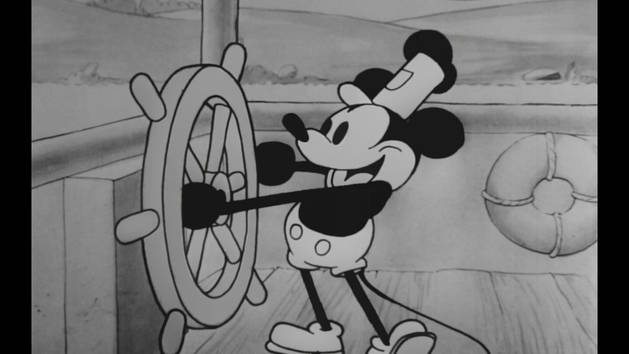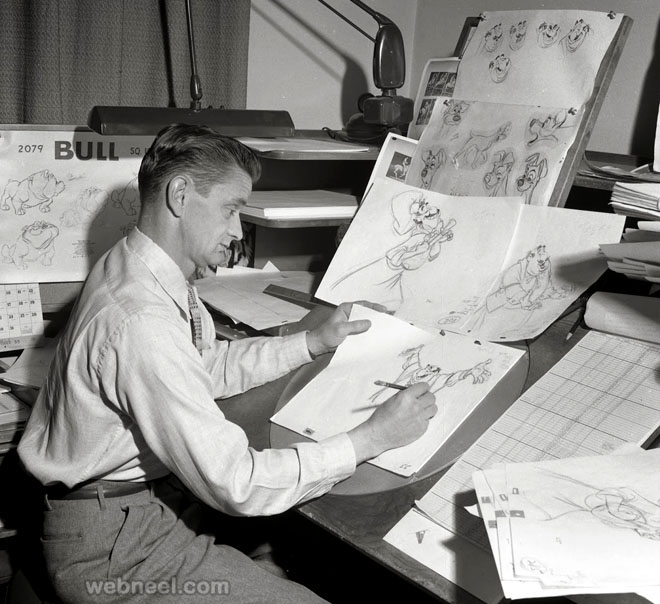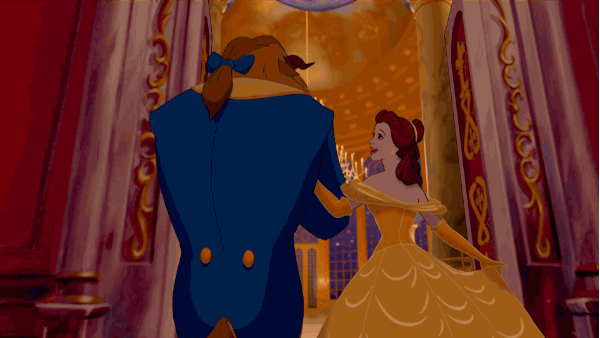
Cartoons, animated films, kids’ movies, whatever you want to call them, they’ve been around for over 100 years now, but while they’ve managed to stay on screen for that time, they’ve done anything but stay the same. From Steamboat Willie to The Little Mermaid, to Moana, animation has constantly evolved since its initial conception. One major change that took place during that time was the transition from traditional 2D animation, to the digital three-dimensional animation of today. In that transition though, there were many steps that slowly and progressively led animators to rely on computers to make their art, rather than hundreds of thousands of sheets of paper.


For this blog, I will mainly focus on the themes and differences in animation of Disney movies, as they are the films where these transitions and changes are most prevalent. That being said, let’s start with the film everyone knows as the first. Snow White and the Seven Dwarves of 1937 was the first full length feature film that was completely animated and in color and it kickstarted the popularity of Disney princess movies, being followed by films such as Cinderella and Sleeping Beauty. In this same period we have films such as Peter Pan, Lady and the Tramp, Pinocchio, and other such similarly animated films. Come 1961, 101 Dalmations was released and with it a new animation style from Disney. Beginning with this film Disney animators used what was called Xerography, a technique developed in 1942 that used dry photocopying methods to cleanly replicate the artists’ work. With this animators could see their pencil strokes show up on screen, adding a certain aesthetic that would stick with Disney for the next 30 years.

With The Little Mermaid, Disney reinvented itself and skyrocketed in popularity with what was seen as the beginning of “the Disney Renaissance.” The Little Mermaid still made use of the Xerography mentioned previously and it wasn’t until 1990 that that was changed. Computers were on their way in, and Disney saw the opportunity to take advantage of their rise in popularity. By using a Computer Animation Production System (CAPS), animators were able to add inks and colors digitally, a technique that was used for the rainbow at the end of The Little Mermaid, but wasn’t completely utilized until The Rescuers Down Under was released to 1990 theaters and everyone was able to witness to smoother more vibrant feel of Disney thanks to the advanced technology of the time.


With the rise of animation technology came more Computer Generated Images within Disney’s films. Although CGI in a primarily 2D animated film was first used with The Rescuers Down Under and The Great Mouse Detective, it was Beauty and the Beast that solidified its place in Disney’s films. Think about the most famous scene from that movie, the ballroom dance. How do you think animators were able to so smoothly sweep throughout the giant room with such grace and emotion? That entire room was CGI and it showed that animated films could make use of complex shots and intricate cinematography to enhance the viewing experience.

Even further into the 90’s a new CGI technique was developed called “Deep Canvas” which created a whole new realm of depth for Disney’s films. What animators would do would plot some part of the film in a 3D rendering program, typically a large structure, a strict geometric figure, or even a background, and then texture it in the program to create a cohesiveness with the 2D characters that interact with the rendering. If you’ve ever watched a 2D Disney movie and noticed something that doesn’t quite look like the characters it was probably a deep canvas. Tarzan sliding through the trees, the vehicles of Atlantis: The Lost Empire, and pretty much the entirety of Treasure Planet, all used deep canvassing technology to create environments and structures with the same filmographic possibilities of life action if not more so.


1995 rolls in and Toy Story, the first completely CGI film, hits theatres and starts Pixar off strong. A decade later Disney animation studios followed Pixar’s lead and make the majority of their films completely CGI. Sadly in today’s day and age, 2D animation is more or less dead. It’s simply an easier process that can achieve greater detail with less effort. 2D animations are for the most part drawn frame by frame, while 3D animation is made with pre-rendered 3D models, which are simply moved to achieve each frame. Think claymation but on the computer. And with the ever growing advancements in technology, complex textures with consistent lighting and even sometimes motion capture technology, the quality of films and what can be done in them have greatly increased since the more recent transition.


While the time of 2D animation has come and gone, we can still appreciate the films of their era. It may be sad that there will probably never be another traditionally animated Disney film, but even without that process, Disney still makes visually stunning films with amazing storylines that just happen to be 3-dimensional, and we can all still appreciate that. Hell I’m watching Moana while I’m writing this and loving every second of it.



Reading this post right now is so ironic because I was just recently talking to a friend about how old animated films had so much character in their individual forms of animation but lately all of them look more or less the same because of CGI. While the visuals used for Moana were definitely breathtaking, I see more value in the authentic hand-drawn visuals in movies like 101 Dalmatians. But I do agree that all of it is wonderful to experience, and I loved reading about this topic. I look forward to future posts!
It’s interesting that as animation became more advanced, it also became easier to do. I never realized that certain animations were done by hand. I think it’d be interesting to hear about the advanced animation done in films like Transformers. It’s crazy how realistic those movies are.